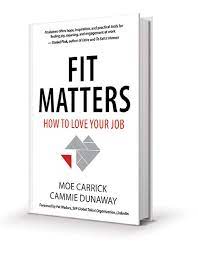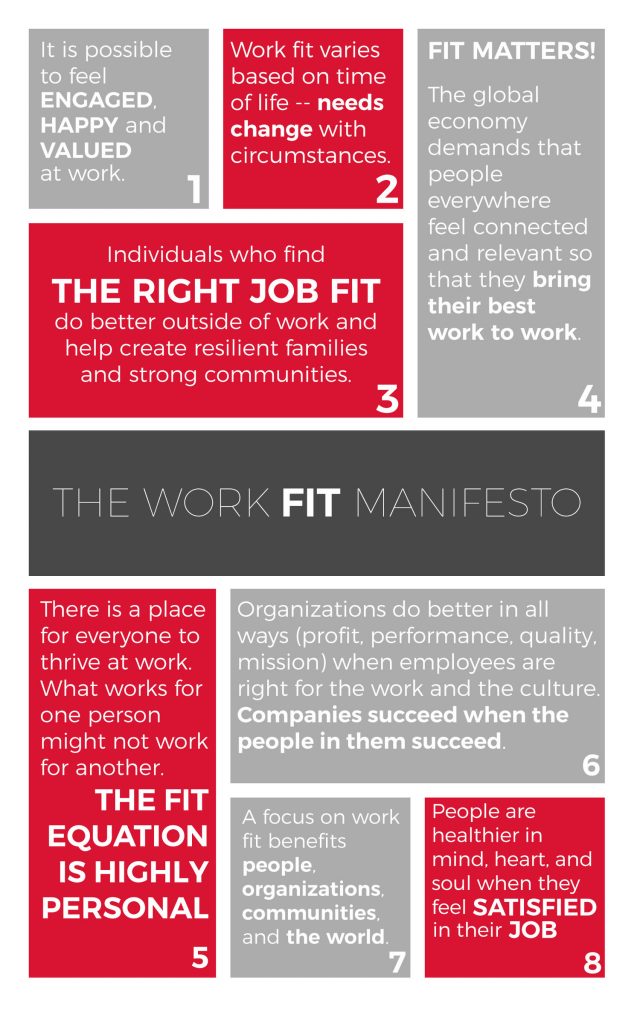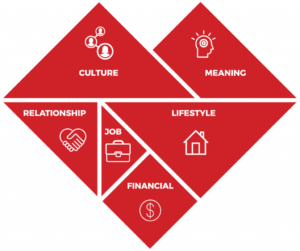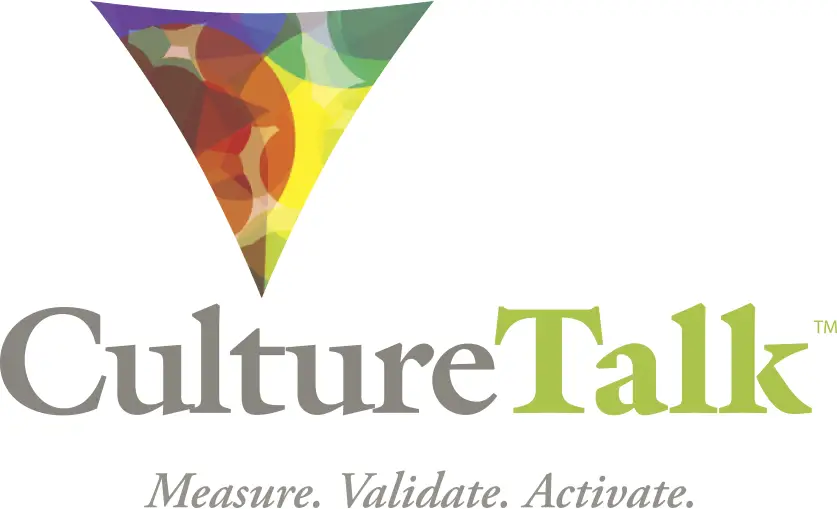Fit Matters: How to Love Your Job
An Interview with Cammie Dunaway
- December 10, 2021
- 5:47 pm
- Cynthia Forstmann
Are we thriving at work? That’s the question I pondered as I sat down with Cammie Dunaway and Moe Carrick’s book, Fit Matters: How to Love Your Job. Blown away by how practical and powerful their advice was for job hunters or employees at any career stage, I sat down with Cammie to talk about some of the book’s themes and the motivations behind their stories.
Cynthia:
Hi. I’m Cynthia Forstmann. I’m one of the founders of Culture Talk and I am delighted to be joined today by Cammie Dunaway, the co-author of Fit Matters: How to Love Your Job. Cammie has held several C-level jobs at very recognizable brands including Frito-Lay, Yahoo, Nintendo, and most recently at a company called KidZania.
On just the jacket alone, Cammie’s book starts with, “Employees are increasingly seeking jobs that feed their spirits, their minds, and their hearts.” Opening from this space makes it safe to be vulnerable as you assess your own fit by asking, “Who am I?” as well as, “Who is the organization?”
One of the things I’m so fascinated about, Cammie, is that the genesis of this book happened for you when you ran into a ‘misfit’ in terms of a job at the prime of your career.

Can you share a little about your career path? When did the “misfit” happen and what was going on for you?
Cammie:
I have been incredibly blessed to work for some great companies where the fit was very natural. I was 13 years at Frito-Lay and then I was at Yahoo for four years. When I had an opportunity to move to the next job that was sort of a big, prestigious job, I didn’t even stop to question whether things like the culture fit were exactly right. I just jumped in with both feet (as I tend to do). But, some cracks started to appear. I could see a challenge in the way the company made decisions – through lots of analysis, lots of discussions. While it reduced the chance of them ever making a bad decision, the process was much slower than I was used to.

I didn’t feel like I had the autonomy that I liked to have. In CultureTalk language, I’m a Ruler Archetype, which means that I like to be trusted. I am happy taking responsibility, but I like to be empowered. This just wasn’t their way of doing business. Being the achiever that I am, I said, “I’m going to make it work. I’m going to cram my round self into this square hole. There must be an opportunity for me to learn and expand my skills.” So, I just pushed harder and harder.
Cynthia:
Which might be some of your Hero Archetype coming out.
Cammie:
It is probably a bit of my Hero. I achieved good business results, but the cost was pretty great personally. I wasn’t using my highest skills and I was expending a lot of energy trying to make things work rather than being in an environment where I could naturally thrive. It took me a long time to acknowledge that.
Through the help of my co-author, I realized that just because you can make it work, doesn’t mean that you should have to work so hard to fit. I ended up deciding to make a move to another company that was a much more natural fit with my personality, skills, and talents.
The week after I left I was having lunch with some girlfriends and one of them said, “Oh my gosh, what are you doing? You look 10 years younger.” I realized at that moment that I really had been paying a high price. I was giving away a piece of my soul trying so hard at something that just wasn’t right.
In your personal example, and others in the book, it sounds like digging in and trying harder, even though it’s not a good fit, isn’t the best strategy?
Cammie:
Exactly. I came to realize that a really talented person put with a really good company doesn’t necessarily mean it will work. And, it’s okay to say, “This isn’t right.” We spend more hours working than we do in any other aspect of our life. We need to know that we’re in an environment where we really can do our best work and use our highest talents.
Cynthia:
It occurs to me that, especially in a C-level role, how visible you are and the vulnerability you must feel in having to stop and say, “This isn’t the right fit”. I think that’s comforting to a lot of people who maybe have a career that isn’t as visible to know that it happens even in places where people have risen to the very top of an organization.
Cammie:
It absolutely does. I think part of my motivation for writing the book was not only my personal journey, but the many conversations that I have had with people at all levels, entry-level to C-suite, where they were just settling. You could tell when you asked them “Tell me about what you do”, that there was no joy there. There was just a sense of, “Well, it is what it is. I don’t think the grass is greener.”
You even see that in the numbers: only 30% of people say that they’re able to do what they love in their job. Some research from Harvard and The Energy Project shows that 59% of us feel physically depleted, emotionally drained, and don’t feel like we are doing work that’s using our best skills. That comes at a huge cost both to individuals and to companies. I want us to do better and I hope my book will help achieve that.

Can you talk a little bit from the organizational perspective about why this issue of fit is so relevant today?
Cammie:
The research is very, very conclusive that engaged employees drive better results all the way through the business. It leads to more satisfied customers, greater productivity, higher quality, and better safety. The latest Gallup research says that over $550 billion dollars are lost in productivity in the US alone from companies having unengaged employees.
Cynthia:
You also quoted a Deloitte study in the book that says that as employee engagement goes up, customer satisfaction goes up.
Cammie:
In that same Deloitte study, they showed that the operating margin of companies that have highly engaged employees versus those that have unengaged employees is two times more. In an era where all companies are focused on profitable growth and competitiveness, it’s essential to figure out how to do better than we’re doing today.
Cynthia:
I’ll add one more thought that wasn’t in your book. An author I recently came across uses a term ‘glass box brands’. It’s based on the idea that your customers, potential employees, and current employees can all see what’s going on in your business, like it’s in a glass box.
Cammie:
Completely agree. In many sectors of our economy, there is a real war for talent. Employees have options and access to data to get the scoop on what the culture and leadership are like.
Culture is one of the six elements in the “fit” framework you created in your book. Others are meaning fit, job fit, relationship fit, lifestyle fit, and financial fit. I’m curious how you and Moe came up with these items. What kind of research process went into developing these as the six?
Cammie:
We started with qualitative research. Just reaching out into our networks and our networks’ networks to interview folks about the time that they had felt the best in their work and times where they had really struggled. We sought to interview people in different life stages and points in their career as well as in different industries and levels.
From that qualitative work, we formed some hypotheses and started to see the six factors you referenced emerge. Then we did a piece of quantitative research with a broad, representative sample of the U.S. to validate if the six factors correlated to people’s satisfaction with work.
You also suggest that individuals really need to identify where they are within each of your six factors of fit. They need to identify what matters most to them. Can you tell us more about that?
Cammie:
One of the things that became apparent is that those six factors need to be considered, but their level of importance varies by individual and over the course of your career. For example, there was a time in the middle of my career where I was in a job that I loved. It was a perfect fit. I was growing. I was learning. I was using my skills. I loved the culture of the company, I had a fantastic relationship with my boss, and I was well-compensated. It was all working together. And then I had my son. All of a sudden, rather than being excited about packing on Sunday evenings for travel, I found myself depressed and anxious because my lifestyle needs had changed.

In that case, I needed to make a change for the way the equation worked for me because one of those six variables had become much more important. It’s important to think about our careers as dynamic journeys to multiple destinations. You have to open yourself to the idea that the importance of these six factors is going to change and always be asking yourself, “Is this working for me right now? If not, what isn’t working and how might I change it?”
Cynthia:
An interesting aspect you mention is that someone in the beginning of their career might have more flexibility in the financial fit category, because they have fewer demands in terms of homes and family. Thus, they can explore other aspects of fit to shift as they make life choices.
Cammie:
Absolutely. In the book, we provide simple tools to help someone think through the six factors and rate how important each one is to them right now. Then rate how well their current situation is meeting their needs. Reflection comes in when you have an area that is highly important but your job isn’t meeting those needs. So, it’s not about always having all six factors at the same time.
Let me switch the conversation for a second and talk about the first element you talk about, “meaning fit.” What is “meaning fit”?
Cammie:
Meaning fit comes down to knowing that your work matters. There’s a couple of ways that this can show up. For some, it’s important to be involved in work that makes a difference in the world. For others, meaning is about being seen and knowing that your work matters. That you’re appreciated. That you feel proud of the work that you do and of the role your work plays within the organization.
Cynthia:
So it can be less about what the organization does and more about how you are seen, how you show up and how you’re experienced in the organization.
Cammie:
Exactly. Again, I think that for different individuals, the role of what the organization does may be more or less important. And, it may shift over time. When my son was two and I was running the Doritos and Cheetos businesses at Frito-Lay, I had this kind of awareness all of a sudden that my job was to convince people to sell products that I wasn’t really sure that I wanted my son to be consuming. Not that there was anything wrong with Doritos and Cheetos, they’re amazing products. But for me at that point in time, it felt a little bit less than what I wanted to be putting my energies into.
Cynthia:
I highlighted a passage in this meaning fit area when you’re talking to your readers about how to discover what’s meaningful to them. You talk a little bit about it how it’s like following the clues of your life.
“Reflecting back on your life to date. Notice the common threads and the major themes. What consistently appears for you? Lifelong interests, values, activities, and things that brought you pleasure.”
I love that idea because it relates really strongly to how we look at personal meaning through the lens of Archetypes. Your Archetypes show up as clues along the way. Cammie mentioned that she has, on our Archetypal survey, scored high on Ruler and then I mentioned Hero as a second one. The third one that was tied with Hero for you is Magician.
I find that the Ruler and the Magician showing up together in somebody’s profile is such a powerful combination. If you think about the Archetypal story of a Ruler and a Magician, it’s like every Ruler always had a Magician as part of their court, you know what I mean?
Cammie:
I think we’re all shaped by our experiences as well. I’ve lived now for 15 years in the Silicon Valley, which is all about disruption and innovation. That has had an impact on me. Now I want to think in transformative ways while making sure we have clear goals and objectives that we honor what’s made us successful in the past.
Cynthia:
I would add that your Archetypal journey might evolve as well. You can evolve the level at which that Archetype is being expressed in your life and your patterns may shift as your life shifts. Awareness opens the opportunity for us to choose.
Cammie:
The idea of evolution is so important. One of the things that I struggle with, I think we all struggle with, is that we’re so busy we don’t take the time out to reflect and really say, “What is bringing me joy now?” Or, “Where do I feel that things are missing?” and really try and make changes so that we’re able to operate at our best and highest.
Cynthia:
There’s actually a line towards the end of the book that says, “Okay, now that I have all this information, now what?” You’ve really put the onus on the individual. I love the words you use – you say, “People need to take charge of their own love affair with jobs.”
Cammie:
I really believe that. I’ve seen great companies invest in training, development, mentorship, and coaching of their teams. But ultimately, the responsibility falls on the individual to make sure that you seek out the feedback, the opportunities, the input that is really going to enable you to thrive. I feel very strongly that we each have both the ability and responsibility.
So, are you thriving at work?
A good work fit brings joy, connection, and meaning. But as Cammie has outlined for us, a misfit in a job can hurt…in more ways than one. At CultureTalk, we agree with Cammie that happiness at work isn’t reserved for just a lucky few. It comes from awareness – knowing what you need and seeking the right environment.
Not sure where to start? Pick up a copy of Cammie and Moe’s book on Amazon or Barnes and Noble. In it, you’ll find powerful advice and some simple, straight-forward activities to unveil your next pathway.






